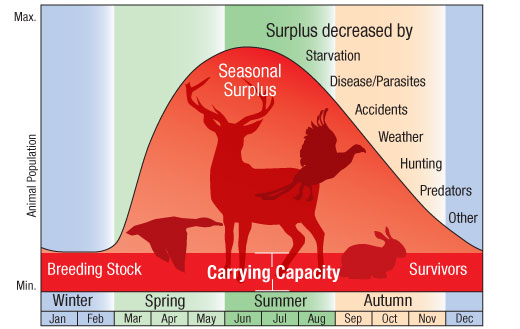What does carrying capacity mean in ecology?
1 Answer
The carrying capacity is a threshold of number of individuals from a population that an habitat can carry.
Explanation:
In a given habitat, the number of individuals of a species that habitat can reasonably sustain for an extended period of time is the carrying capacity. Carrying capacity is determined by the amount of resources available such as food, water, and geographic space available, but also by the number of predators and competitors. Past the carrying capacity, a habitat can't carry or support additional individuals of this species if every member of that species is to fulfill their needs.

For example, picture yourself a rock with barnacles on it. Giving the mean size of a barnacle, you can estimate the surface the barnacle will need. The carrying capacity of the habitat, in this case it is the rock, for the population of barnacles will be reached when the rock is fully covered.
Populations have different ways to deal with this carrying capacity. One strategy is that the most competitive individuals defend their resources and the population can't grow pass the carrying capacity ( like the barnacles).
An other way is that the resources are equal distributed among the individuals of the population. therefor pass the carrying capacity the amount of resources per individuals is below theirs needs which lead to an increase of mortality in the population. In this case the effect if of the population oscillate around the carrying capacity.
(Those strategy are purely theoretical, several other factors participate to the dynamic of the population in nature)
Check out these related topics on Socratic: how can carrying capacity be reduced, how do you find the carrying capacity on a graph, and how have humans changed carrying capacity.

